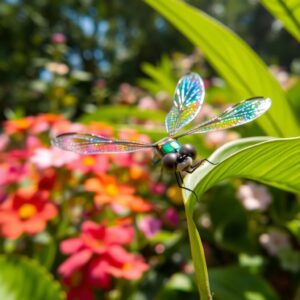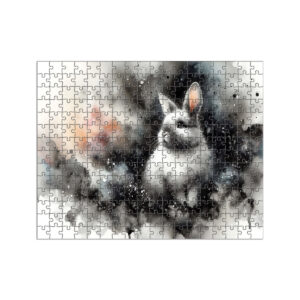
Explore & Play
Discover interesting topics and solve the accompanying crossword puzzle.
Bird Crossword: Fascinating Facts About Birds
Table of Contents
Bird crossword
You can either fill in the crossword puzzle directly on this page or click the button in the bottom right corner to print it for free.
——————————————
Fascinating Facts about Birds: From Eagles to Hummingbirds
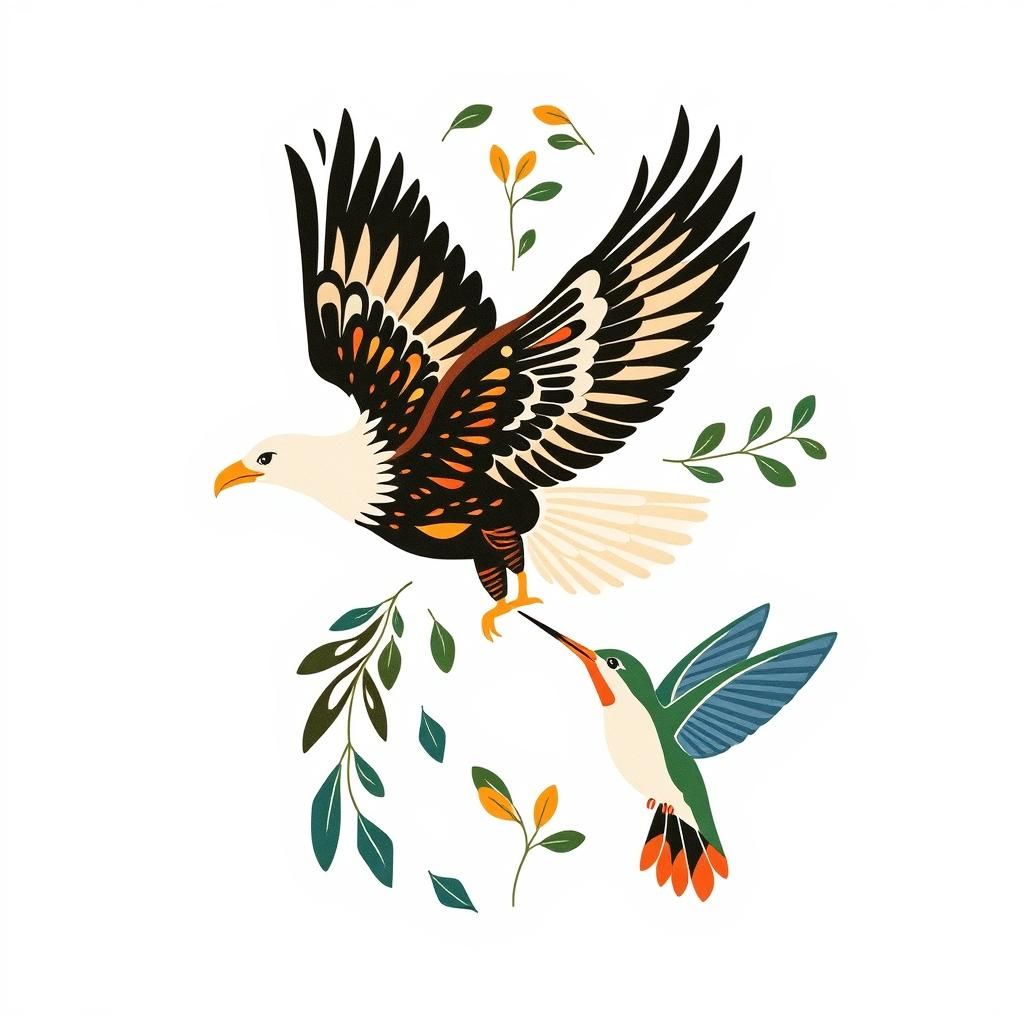
Introduction
There’s a certain kind of magic in watching birds — the way they dip and rise, their quiet calls at dawn, or the shimmer of feathers catching sunlight. Birds fill our skies and woods with life, each species carrying its own story written in flight, song, and survival. From the fierce Bald Eagle soaring high to the tiny Hummingbird darting between blooms, these creatures remind us how varied and wondrous the natural world can be.
Understanding birds is more than just knowing their names or shapes; it’s learning how they’ve adapted, how they live alongside us, and how they fit into the larger web of life. Whether it’s the Sparrow pecking near city sidewalks or the Penguin waddling through icy waters, each bird crafts its own chapter in the grand tale of nature.
In the pages ahead, we’ll meet some of these feathered storytellers — Eagles, Sparrows, Penguins, Owls, Robins, Pigeons, Swans, Ostriches, Parrots, and Hummingbirds. Each one offers a glimpse into a world where survival depends on instinct, adaptation, and a little bit of wild grace. So, settle in as we explore the fascinating lives of birds and maybe, just maybe, feel inspired to look up and listen a little closer next time you step outside.
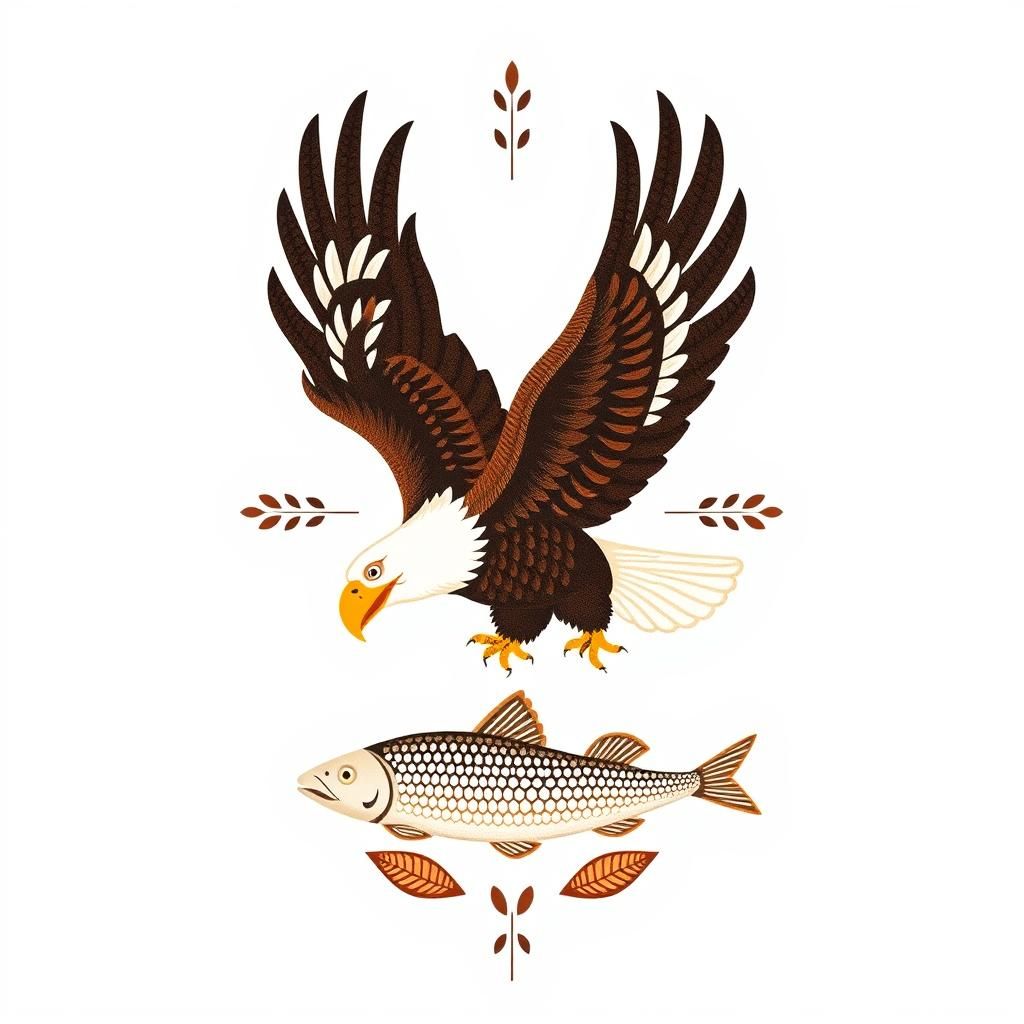
Bald Eagles: Majestic Birds of Prey
If you’ve ever caught sight of a Bald Eagle soaring high with that unmistakable white head gleaming against a blue sky, you might have wondered—is it really bald? The answer is no. Those snowy white feathers make it look like it’s going bald, but in truth, the name comes from an old English word meaning “white-headed.” Their stout brown bodies and sharp yellow beaks complete a look that’s as striking as it is iconic.
Bald Eagles are more than just a pretty face, though. When they take to the skies in pursuit of prey, they dive at speeds reaching up to 99 miles per hour—faster than most cars on a highway. This speed, paired with razor-sharp vision, turns them into formidable hunters. They swoop down, talons outstretched, ready to snatch fish right from the water’s surface. It’s a dance of precision honed by thousands of years.
These birds carry more than the weight of their own wings in the wild—they’ve become a symbol of strength and freedom, especially in the United States where they stand tall as the national emblem. Yet, their journey hasn’t always been easy. For decades, Bald Eagles faced threats from habitat loss and harmful pesticides. Thanks to dedicated conservation efforts—think government protections and cleaner rivers—they’ve made a remarkable comeback, reminding us that we can coexist with nature if we lend a helping hand.
Watching a Bald Eagle glide effortlessly overhead is a quiet reminder that sometimes, power lies in patience, skill, and a connection to the wild world that’s older than any story told around a crackling fire.

Sparrows and Robins: Urban Survivors
There’s a quiet resilience in the way sparrows and robins make themselves at home in the bustle of our cities. Step outside on a cool morning and you might hear the soft chirp of a sparrow darting between flower pots or catch a flash of a robin hopping along a park bench. These little birds aren’t just surviving—they’re thriving amid the concrete and commotion.
What makes them such ace city dwellers? For starters, they’re not picky eaters. Sparrows will nibble on anything from spilled breadcrumbs to tiny insects hiding in cracks, while robins tuck into worms, berries, and whatever treats come their way. Their nests are just as adaptable; you’ll find them tucked safely in tree branches where leaves rustle in the breeze or tucked neatly under eaves and window ledges of buildings. It’s as if they’re quietly weaving their homes into the fabric of our daily lives.
But their presence isn’t just a comforting backdrop; it’s a vital part of urban ecology. These birds help keep insect populations in check—think of them as natural pest controllers, patrolling the green patches and flower beds. Their songs and movements bring a bit of wildness to spaces we often forget belong to nature as much as to us. Watching a robin bob its head or a sparrow fluff its feathers is a gentle reminder that life finds a way, even in the heart of a city.
So next time you’re stepping out or watching the world go by from a café porch, pause for a moment with these steadfast neighbors. Their simple acts—nesting, feeding, singing—carry a quiet magic, a testament to adaptability and the small wonders woven into everyday life. They invite us to slow down, notice, and appreciate the humble beauty of urban birdlife.
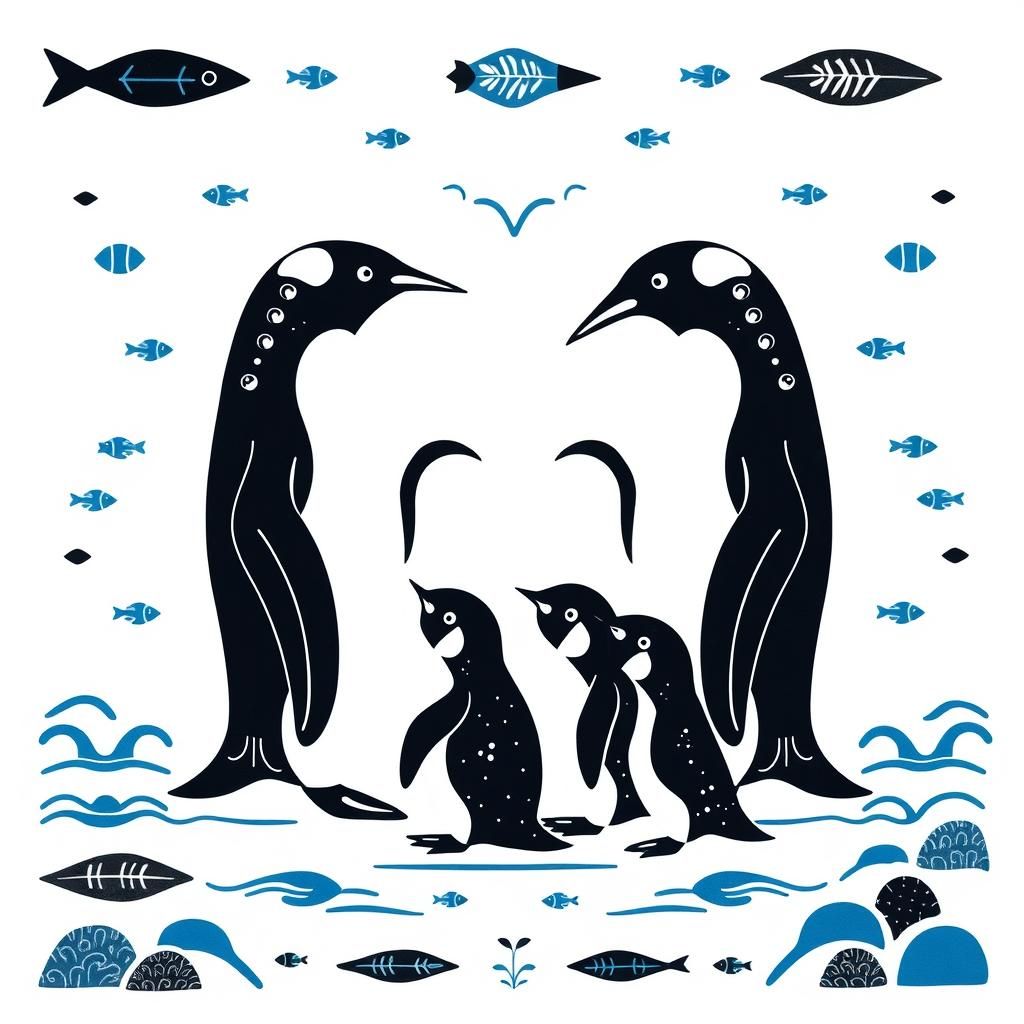
Penguins: Flightless Yet Fascinating
There’s something quietly remarkable about penguins, isn’t there? Picture them waddling across icy shores, their sleek black-and-white feathers a sharp contrast to the snow beneath their feet. These birds have traded the sky for the sea, evolving in a way that feels both surprising and perfectly suited to their chilly homes.
Unlike most birds, penguins can’t take to the air. Instead, their wings have turned into flippers, turning them into graceful swimmers. Beneath the waves, they’re unstoppable—cutting through the water with ease and speed, chasing fish and krill like underwater dancers. Their bodies are built for this life: short, sturdy legs, a thick layer of fat for insulation, and tightly packed feathers that keep the cold at bay.
Depending on where you find them, penguins have carved out lives in some of the harshest environments on Earth. From the icy landscapes of Antarctica to the rocky coasts farther north, each species has learned to thrive. Their social nature shines, too, with breeding colonies buzzing like busy little towns during the warmer seasons. It’s a dance of survival, with both parents sharing the duties of incubation and feeding—a brief but powerful glimpse into a shared journey through tough times.
Breeding often happens in tightly packed groups, offering warmth and protection against the biting winds. It’s a story that’s repeated year after year, season after season—a quiet, steadfast testament to resilience and cooperation.
So, while penguins may not be soaring through the sky, their mastery of the sea and their enduring spirit paint a picture of life that’s anything but ordinary. They remind us that sometimes, the greatest journeys are made not upward, but forward through icy waters and frozen landscapes.
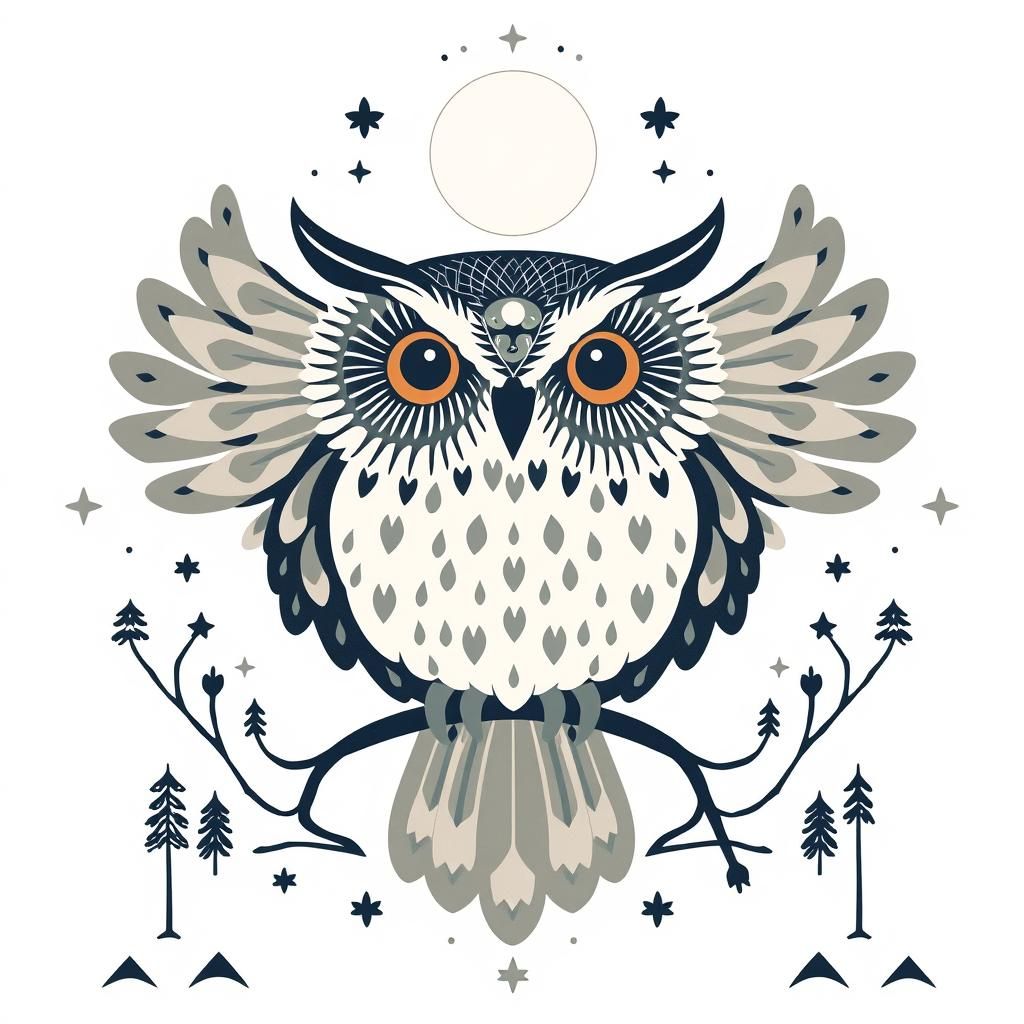
Owls: Mysterious Night Hunters
There’s something quietly captivating about owls—the way they glide through moonlit forests, almost like shadows stitched from soft feathers. In 2025, a curious twist surprised birdwatchers: Northern saw-whet owls moved far beyond their usual haunts, showing us just how mysterious and adaptable these night hunters can be.
Owls wear their secrets close. Their silent flight, for instance, isn’t just magic but a clever trick of nature. Specialized feathers muffle sound, allowing them to sneak up on prey even in the stillest night. Couple that with eyes tuned for darkness—huge, forward-facing, and brimming with light-catching cells—and you’ve got a predator that practically sees heat in the cold black.
Hunting is a quiet ritual of patience and precision. Owls listen for the faintest rustle under leaves or snow, then swoop down to snatch mice, insects, and sometimes even small birds. Their diet is as varied as the shadows they move through, perfectly tailored to their woodland theaters.
But owls are more than just hunters. Around the world, their images perch in stories and legends—symbols of wisdom, mystery, and sometimes, the unknown. To hear the hoot echo over a field or through a village night is to brush up against old tales and shared secrets, whispered from one generation to the next.
Owls teach us to slow down, to listen, and to watch with care. They remind us that in the quietest corners of the night, life goes on, full of unseen movement and ancient rhythms. And if we’re lucky, we might catch a glimpse—just a flash of moonlit feathers—as they pass softly under the stars.
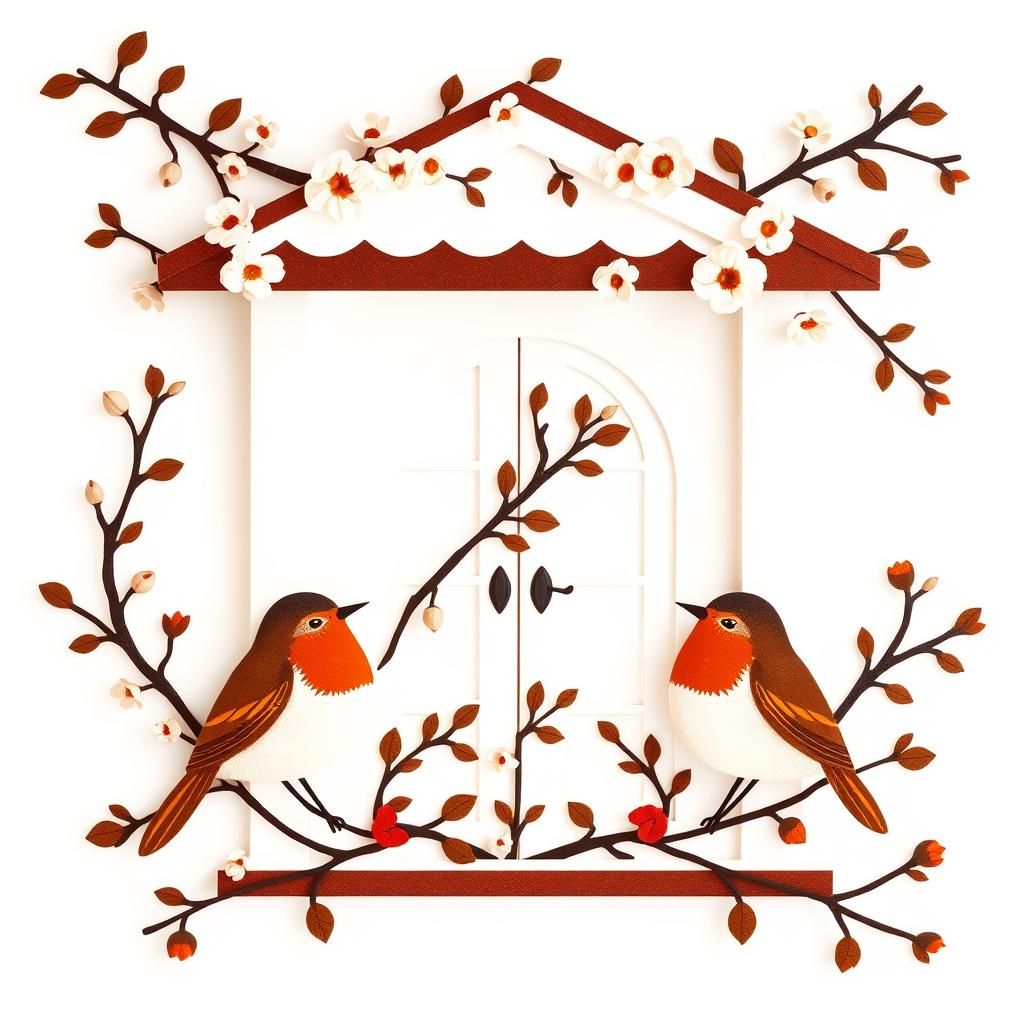
Robins: The Early Birds
There’s a certain quiet joy in spotting a robin as spring tiptoes into the neighborhood. These little birds, with their rust-red breasts, seem to carry the promise of new beginnings. But robins are more than just a cheerful sign of the season—they’re city slickers in their own right, adapting to life alongside us with the same ease as their sparrow neighbors.
Robins make their homes where they can—be it a sturdy tree branch, a cozy nook on a porch, or tucked beneath the eaves of a familiar building. Their nests, often crafted from mud and grass, are simple yet sturdy, built with the care of an old friend who knows the value of a well-made shelter. Their diet changes with the seasons, too. In warmer months, they feast on worms, insects, and berries, while colder days find them nibbling on fruits or leftover seeds scattered around. Watching a robin tug at the earth for a worm is a gentle reminder of the seasons turning, while their morning song gently stirs the air, calling in the day.
Beyond their charm, robins quietly keep the balance of city ecosystems. They’re nature’s little pest controllers, munching their way through insect populations that might otherwise take over garden patches or green spaces. Their presence signals a healthy, humming biodiversity—proof that even in the heart of town, nature finds a way to flourish. So next time you see a flash of red on a branch, take a moment. That robin isn’t just a bird—it’s a tiny, persistent pulse of life reminding us that even the simplest things connect us to the bigger picture.
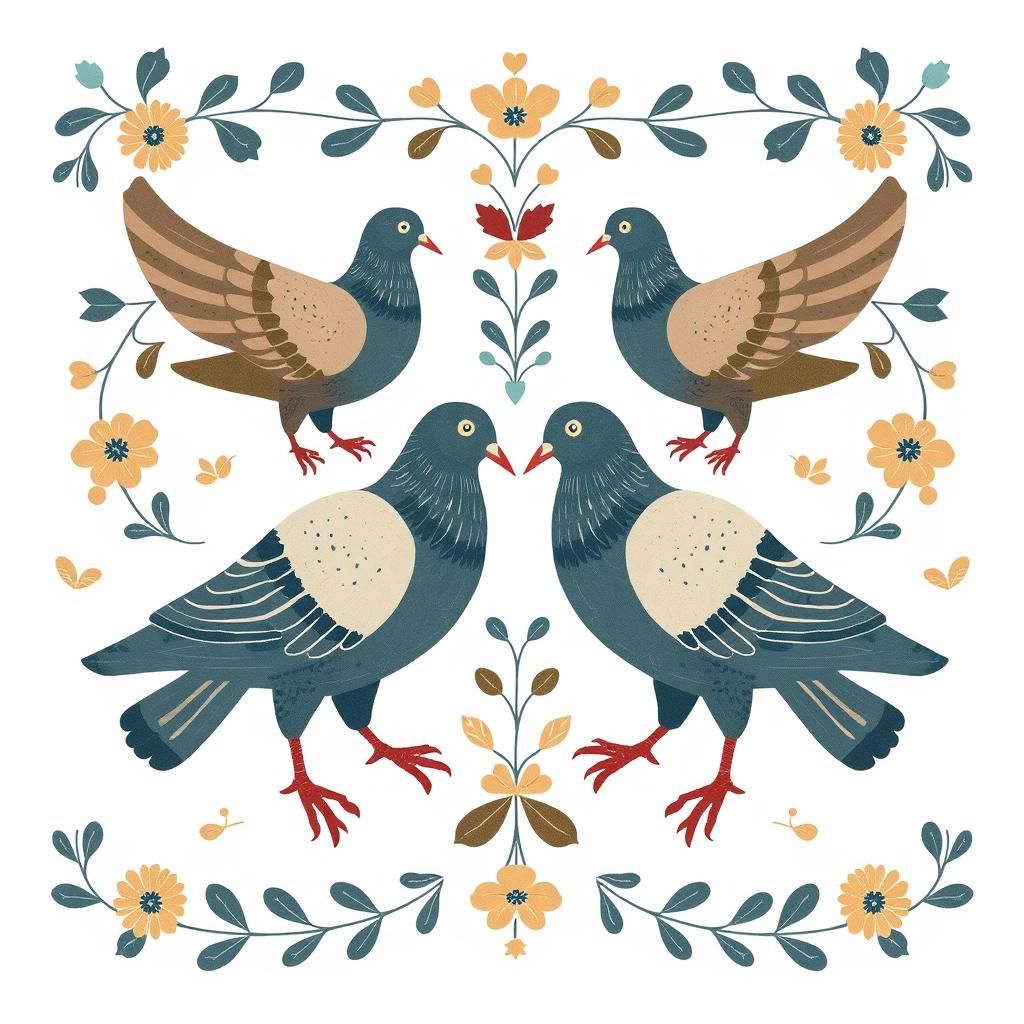
Pigeons: More Than Just City Birds
There’s a quiet charm about pigeons that often goes unnoticed as they strut about city squares or perch on old rooftops. More than just your everyday city dweller, pigeons carry a legacy steeped in intelligence, resilience, and surprising social grace.
Once seen mainly as a nuisance, these birds have been stepping into the spotlight as cherished companions. Their rising popularity among pet owners isn’t just a passing trend—it’s a nod to their clever minds and friendly nature. Pigeons form strong bonds not just with each other, but also with the humans who care for them, making them gentle, engaging pets.
Their communication is a language all their own. From coos to body language, pigeons share messages that go beyond what meets the eye. One of their most remarkable skills is homing—no matter how far they’re taken, many pigeons will find their way home with unfailing precision, a skill honed over centuries of partnership with people carrying messages across fields and oceans.
These birds also play a vital role in urban ecosystems. They help control insect populations and act as a living thread weaving city life with the natural world. So, next time you see a flock coasting along the breeze or pecking near a sidewalk crack, take a moment to appreciate their quiet intelligence and the rich history carried in their steady wings.
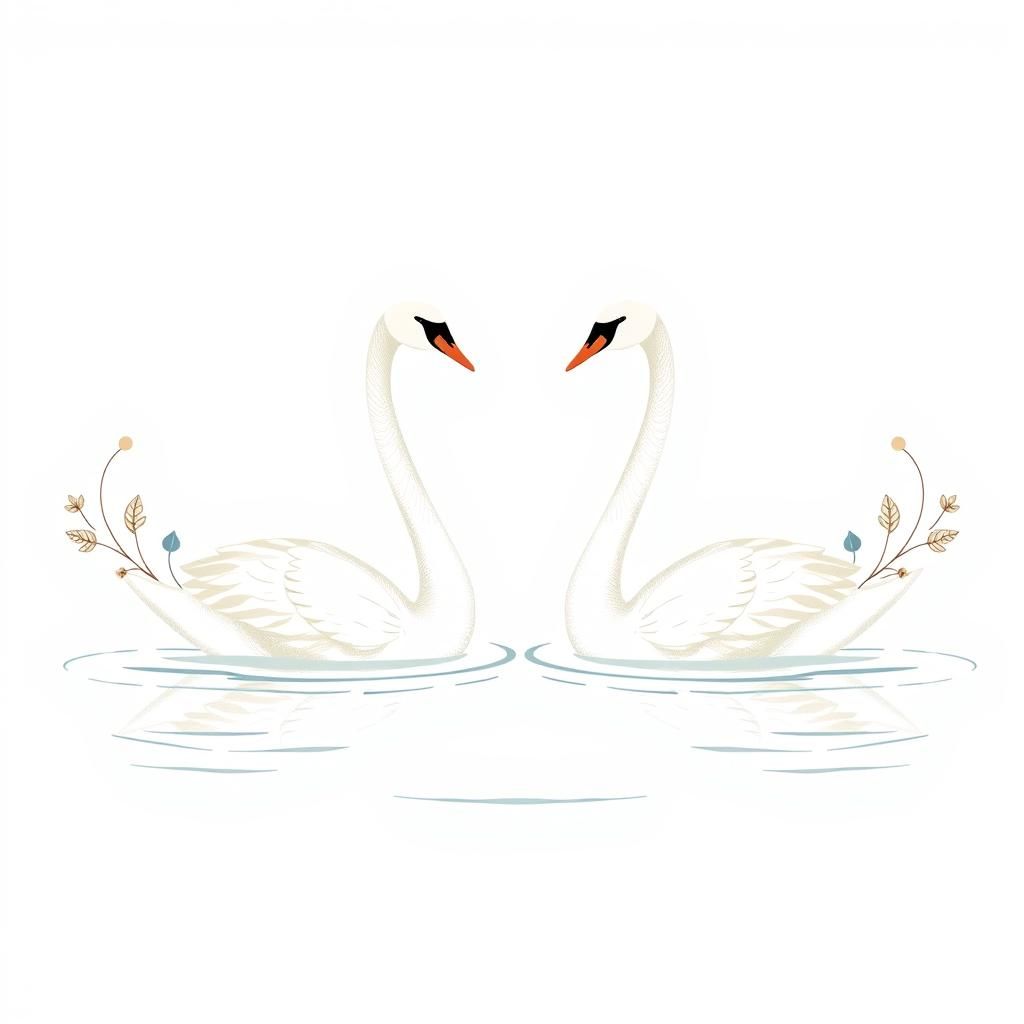
Swans: Graceful Waterfowl
There’s something quietly majestic about watching a swan glide across a still pond, its long neck curved like a delicate ribbon in the morning mist. Swans carry themselves with an effortless grace that seems pulled from a storybook. Their snowy white feathers and expansive wingspan make them one of the most eye-catching sights in any wetland or lake.
But there’s more to swans than just beauty. Their mating rituals are poetic in their devotion. These birds often form lifelong bonds with their partners, an enduring dance that begins with intricate courtship displays — head bobbing, synchronized swimming, and soft calls shared only between the two. It’s a reminder of a simpler kind of loyalty, rooted in nature’s quiet rhythms.
Swans favor calm waters like lakes, slow rivers, and marshes where they can forage on underwater plants. While they don’t travel great distances like some other migratory birds, they do move seasonally to find open water when winter grips their habitats. In these wetlands, swans also play a vital role — their foraging helps keep aquatic ecosystems healthy, balancing plant growth and providing food for other wildlife.
Next time you spot a swan, slow down and watch – there’s a whole world of gentle strength and old-world charm beneath those feathers, a living thread woven into the landscape’s timeless beauty.

Ostriches: The Giant Ground Birds
Picture a wide-open plain, the sun warm on your skin, and a towering figure moving steadily through the grass. That’s the ostrich—no ordinary bird, but the largest living one on earth. Before we dive into their remarkable traits, let’s settle an old tale: ostriches do not bury their heads in the sand when danger looms. It’s a myth as stubborn as the dust on a country road.
In truth, when threatened, ostriches often lower their heads and necks close to the ground, flattening themselves against the earth. From a distance, it might look like hiding, but it’s more of a clever camouflage, blending into the landscape to avoid detection by predators. This isn’t a sign of fear, but a quiet confidence borne from their survival smarts.
And survival is no small feat for these giants. Standing up to nine feet tall and tipping the scales at over 300 pounds, ostriches sport powerful legs built for speed and endurance. With a stride that can cover up to 16 feet in a single bound and sprinting speeds hitting nearly 45 miles per hour, they outrun most threats rather than fighting them. Their legs don’t just make them fast—they’re formidable weapons too, capable of delivering kicks strong enough to deter lions or hyenas.
Living mostly in the arid savannas and deserts of Africa, ostriches have adapted to tough, dry conditions that would sap the spirit of many animals. Their long necks serve as watchtowers, scanning the horizon for danger, while their large eyes catch the faintest movement. They eat a diet of plants, seeds, and insects, digesting tough fibrous materials thanks to a specially adapted gut.
Beyond their size and speed, ostriches embody a quiet resilience. They remind us that strength need not roar—sometimes it simply stands tall, steady, and ready to run when the moment calls for it. So next time you hear that old story about hiding heads, remember the ostrich for what it truly is—a creature of grit, grace, and grounded wisdom in the vast, sunlit plains.
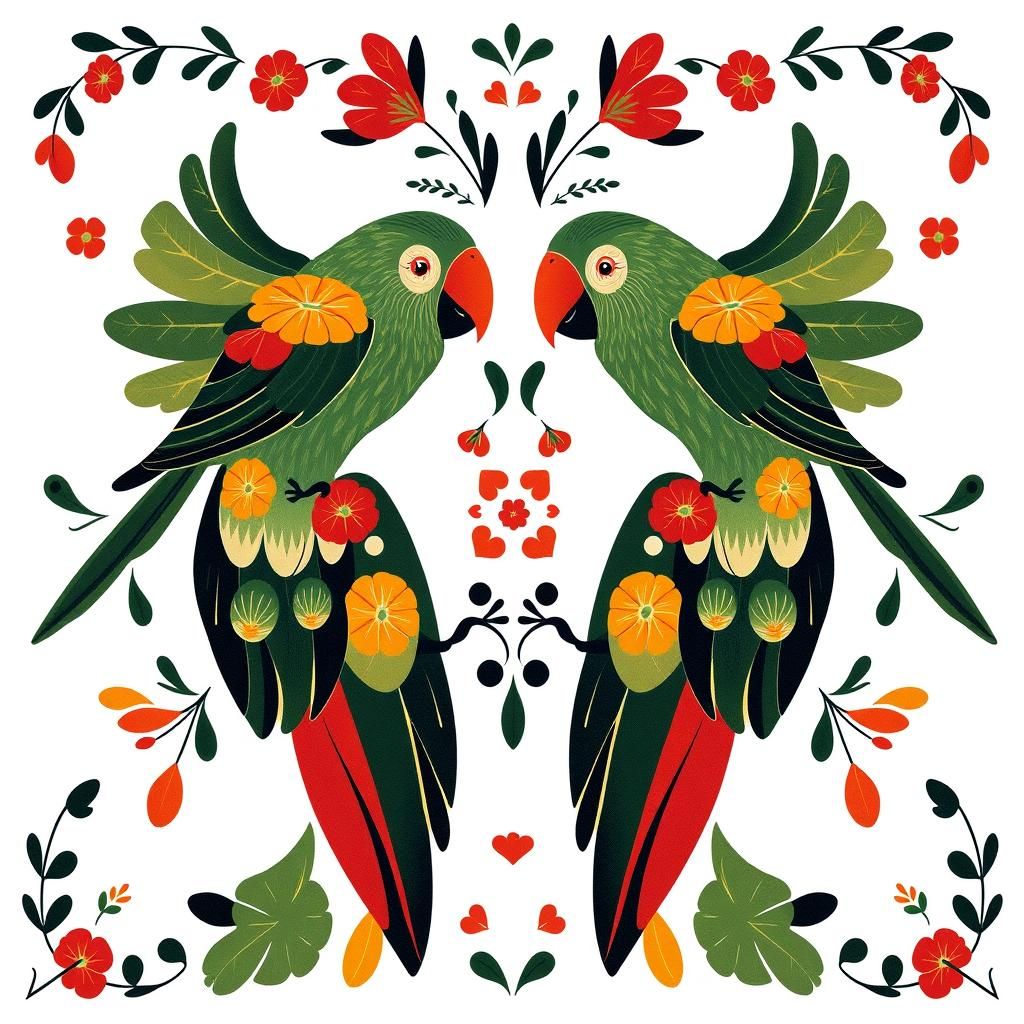
Parrots: Smart and Social Creatures
There’s a cozy magic in watching parrots chatter away, trading squawks and whistles like old friends swapping stories on a porch swing. These birds aren’t just colorful feathers and loud voices—they’re clever souls with a knack for kindness that often goes unnoticed. One of the most touching glimpses into their world is their habit of sharing food, not just passing crumbs around, but offering a bite to a companion without holding anything back. It’s a quiet act of generosity that hints at deep social bonds and a natural understanding of community.
Parrots live in groups that are as intricate as any neighborhood gathering, filled with their own chatter, signals, and dance-like movements. They don’t just stick to their flock—they learn from each other, mimic the sounds around them, and even pick up human words. This mimicry isn’t mere parrot chatter; it’s a window into their intelligence and curiosity, reflecting a mind that’s both playful and sharp.
For folks who keep parrots as pets, it’s more than just a bird on a perch. These feathered friends crave interaction and mental stimulation, their brilliance shining through games and conversations, no matter how simple. It’s easy to see why they’re treasured companions and why conservation efforts are vital—parrots hold a mirror to the delicate balance between nature and humanity, reminding us that smart, social creatures thrive best when their forests and skies are safe.
So next time you hear the squawk of a parrot, think of the generous heart beneath those bright feathers, the clever mind keeping tradition alive, and the timeless dance of friendship that echoes through the treetops. It’s the kind of wisdom that invites you in, warms you up, and gently encourages you to look a little closer.
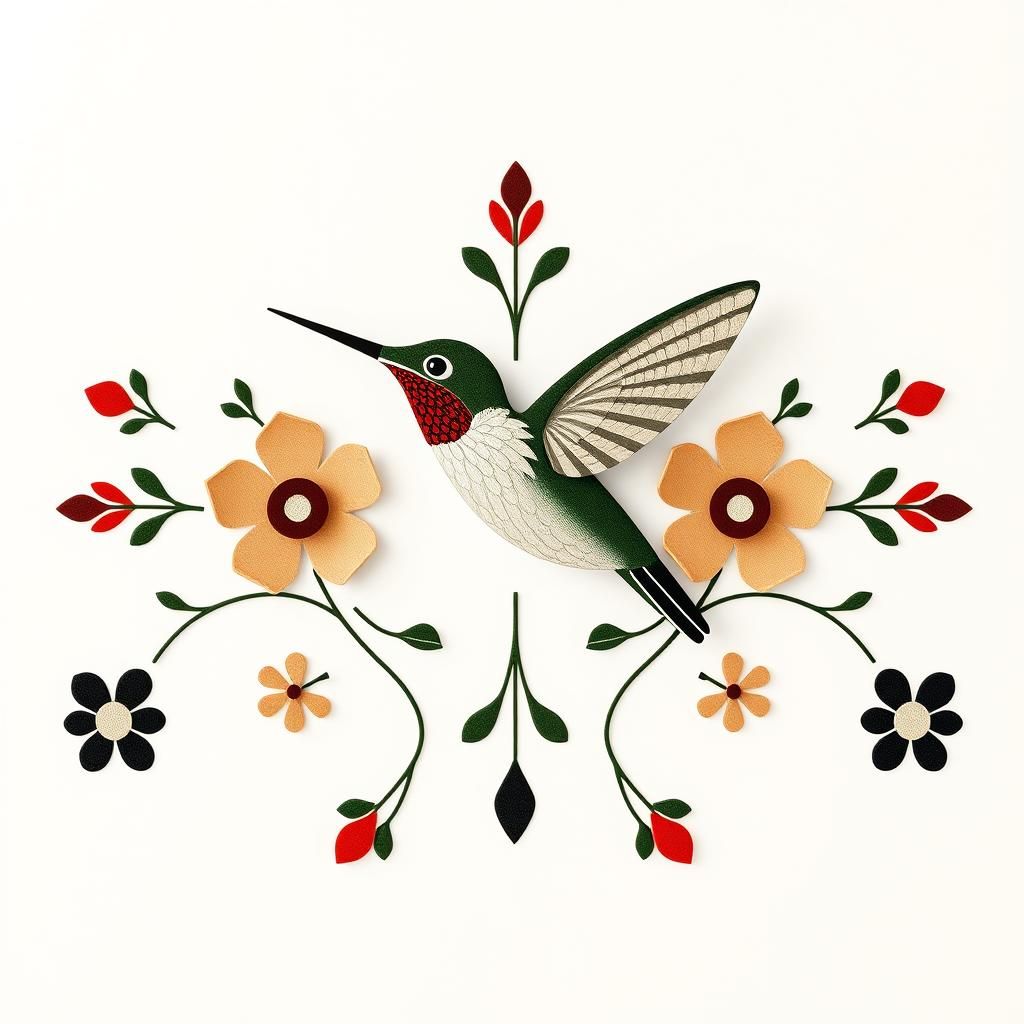
Hummingbirds: Tiny Aerial Acrobats
Picture a summer garden in full bloom, the air humming softly with life. There, darting between flowers like a flash of living jewels, are hummingbirds—the acrobats of the bird world. These tiny birds pack a startling set of skills into their delicate frames, making them as fascinating as they are beautiful.
First off, their flight is nothing short of a marvel. Their wings beat at a dizzying speed—up to 50 times every second. That rapid flutter isn’t just for show; it’s how they stay perfectly still in the air, hovering like little helicopters while they sip nectar from blossoms. Even more impressive, they can fly backwards, a trick few birds can pull off. Imagine the control and strength tucked into something so small.
Despite their size, these birds aren’t slow pokes. While a bald eagle might streak downward at nearly 100 miles per hour during a dive, hovering hummingbirds rely more on agility than outright speed. Their movements are deliberate and precise, built for tight quarters and quick escapes rather than long-distance chases.
But all this wing magic comes at a cost. Hovering demands a ton of energy—hummingbirds need to refuel often, feeding on nectar that’s as sweet and rich as nature’s own energy drink. Flowers, in turn, benefit from this buzzing delivery service, making hummingbirds vital partners in the dance of pollination.
In every quick flick of their wings and every daring flight move, hummingbirds remind us of the wild inventiveness woven through nature’s design. They invite us to slow down just a moment, watch closely, and appreciate how even the tiniest creatures hold vast depths of wonder.
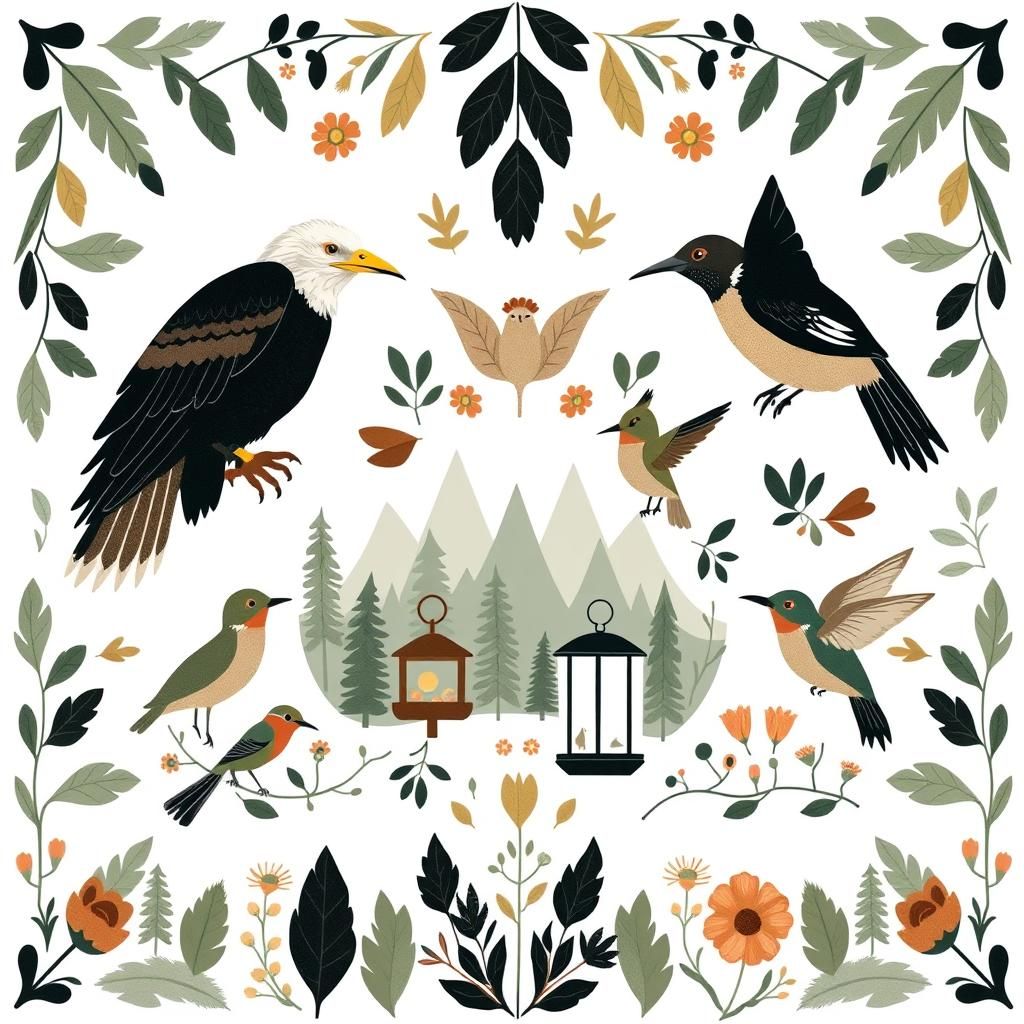
Conclusion
As we close this little window into the world of birds, it’s clear just how varied and remarkable these creatures truly are. From the soaring Bald Eagle, with its raw power and grace, to the tiny hummingbird, beating its wings with dizzying speed like a tiny dancer in the air—each bird carries a story written in feathers and flight. Sparrows and robins remind us that even in the middle of concrete and steel, nature finds a way to thrive. Penguins show us that sometimes flight isn’t about the sky but the water. And owls, with their silent wings and watchful eyes, connect us to ancient myths and the quiet mysteries of the night.
All these lives, from swans gliding across misty ponds to ostriches racing across dusty plains, weave a rich tapestry of survival, adaptation, and beauty. They lean into their environments with old wisdom and gentle strength. Their tales are not just of survival but of belonging—in forests, cities, deserts, and oceans alike.
If there’s one thing to take away, it’s this: birds are not just background music to our days—they are living, breathing reminders of the wild, the simple wonders just outside the window. Taking time to watch a robin flit among branches or hearing a pigeon coo in the morning brings us closer to something timeless, something grounding.
So let’s keep our eyes open and our hearts willing. Whether you live where birds are your closest neighbors or find them when visiting a faraway park, there’s always a chance to learn, protect, and celebrate these feathered neighbors. Plant a few native flowers, build a bird feeder, or simply pause for a moment to listen.
Birds belong to the earth as truly as the trees and streams do—they carry stories older than any of us, whispered on the wind. And if you ever find yourself watching a hummingbird hover, or a majestic eagle glide overhead, I hope you feel a touch of that quiet magic, inviting you to slow down and join the dance.
Share to...
I hope you enjoy the content.
Want to receive our daily crossword puzzle or article? Subscribe!
You may also be interested in
Share to…
Want to receive our daily crossword puzzle?
-
Jigsaw Puzzles
Chinese Zodiac Rabbit Jigsaw Puzzle – Ink Art Series 250 | 300 | 500 Pieces
kr 348,00 – kr 439,00Price range: kr 348,00 through kr 439,00 Select options This product has multiple variants. The options may be chosen on the product page -
Jigsaw Puzzles
Elegant Pig Zodiac Watercolor Jigsaw Puzzle 250 | 300 | 500 Brikker
kr 348,00 – kr 439,00Price range: kr 348,00 through kr 439,00 Select options This product has multiple variants. The options may be chosen on the product page -
Jigsaw Puzzles
Art Nouveau Jigsaw Puzzle with Playful Dog in Scenic Landscape 250 | 300 | 500 Pieces
kr 348,00 – kr 439,00Price range: kr 348,00 through kr 439,00 Select options This product has multiple variants. The options may be chosen on the product page

